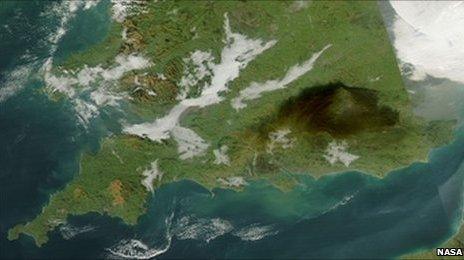How the Buncefield fire happened
- Published

The Buncefield fuel depot fire in December 2005 was the UK's biggest peacetime blaze.
The Hertfordshire Oil Storage Terminal, or HOSL as it is also known, handled around 2.37 million metric tonnes of oil products a year - mainly petrol, diesel and aviation fuel - delivered by tankers and pipeline.

The depot, opened in 1968, is outside the town of Hemel Hempstead, 40km (25 miles) northwest of London and just off the busy M1 motorway, which was closed twice because of the fire.
Some residents had to be evacuated from nearby housing, while offices and warehouses around the site suffered major damage.
Disaster struck early in the morning of Sunday 11 December as unleaded motor fuel was being pumped into storage tank 912, in the north west corner of the site. Safeguards on the tank failed and none of the staff on duty realised its capacity had been reached.
By 0520 GMT, investigators believe, the tank was overflowing.
How tank 912 overflowed

The overflow from the tank led to the rapid formation of a rich fuel and air vapour. It thickened to about 2m (6.6ft) and started spreading in all directions.
How the vapour spread

Further explosions followed and a large fire took hold, eventually engulfing 20 large storage tanks. Emergency services declared a major emergency at 0608 and a huge firefighting effort began, peaking with 25 fire engines, 20 support vehicles and 180 firefighters on site before the blaze was finally extinguished on 15 December.

The plant - co-owned by Total and Texaco, with sections operated by other firms including BP and the British Pipeline Agency - suffered extensive damage, although the water curtain helped save large areas.
At one point black smoke covered much of south-eastern England, as satellite images show.

- Published16 July 2010